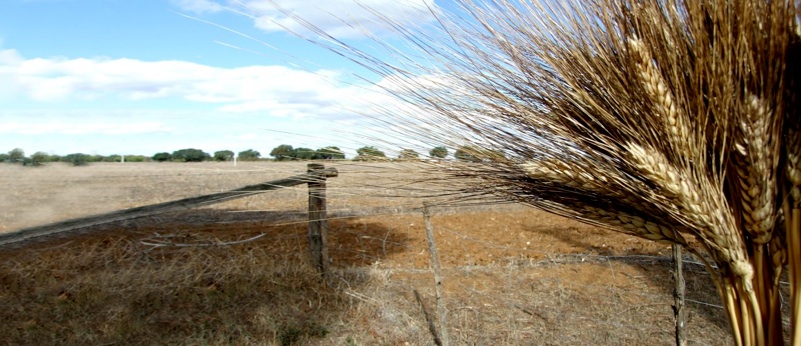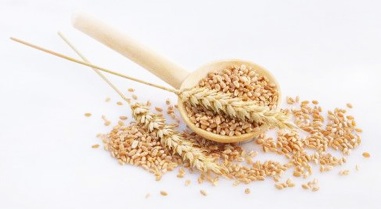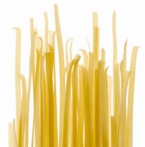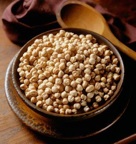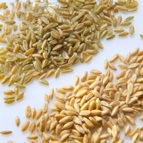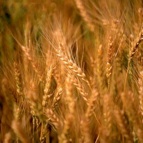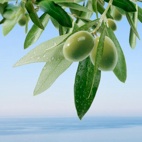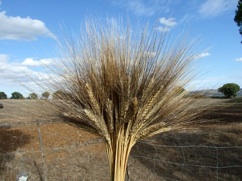The WHEAT is a grain belonging to grass and its grain (cariosside) is what, through the grinding, is used in the food industry.
The grain of wheat is made basically from 4 parts: the bran (six outer layers defending from the inside), the beard that allows the exchange oxygen / carbon dioxide between the interior and atmosphere, the seed (all opposite end of beard), which contains many substances and it is responsible for producing the future plant, the endosperm - finally - that is the most important because it gives rise to flour or semolina or semolato and containing starch and gluten.
Wheat stands out in Soft Wheat ( grown in all regions of the world climate tempered and used to produce bread and pastries), Half- hard Wheat (grown in Argentina and the USA in the North and used to produce bread and pastry) and Hard Wheat (Durum).
The Hard Wheat or "Triticum Durum" (cultivated as well as in Italy, in the United States, Canada, Russia, Argentina, Chile, Spain, Greece, in some countries of North Africa and Middle East) is, and only one, which is used to produce pasta.
The difference between hard and soft wheat is considerable: genetically, one presents the 14 chromosomes, the other 21; durum wheat breaks difficult (hence the definition of "hard") and produces a grainy semolina blonde, while the tender is less resistant and produces a white flour.
Many are the names that wheat has as a variety of cultivation and sensitive are the differences that they have to organoleptic characteristics and performance in terms of processing.
SENATOR CAPPELLI
The name "Senator Cappelli" doesn’t say anything to the most, but many people has remembered the movie in history, when Benito Mussolini gathered in this wheat. It's called in this way, in honour of Senator Raffaele Cappelli, who was in the early’900 the promoter of the agrarian reform, which led to the distinction between hard and soft wheats. It 'a hard wheat, “aristato” (ie with “ariste”, filaments which are seen in the grasses), which is made by a genealogical selection in Foggia, in 1915, from Strampelli Nazareno. For decades has been growing more widespread in the South of Italy and the Islands. A record maintained until the emergence of more productive varieties and shorter ones.
Wheat Cappelli is a grain that has particular characteristics. His ears have unmistakable blacks moustache and thy’re high more than a metre and eighty , with strong endings. The remarkable height has made difficult to cultivate this wheat because of continuing “reclining” (getting off on the ground due to wind or rain). “Senator Cappelli” is in itself a variety of production: 19-21 fertile gimps against 15-20 durum wheat in general and a number of cariossidi (fruit), which ranges from 40-60 per ear. This is square, white-blonde, brown-black ariste half length. The cariossidi are yellow amber and considerable weight: 58 grams per 1000 cariossidi.
The low yield anyway (about 20-24 quintals per hectare) has caused the replacement to the late'60s. But it can not obscure the importance of this sort in view of the cereal-growing world. Almost all involved breeder of durum wheat used the Senator Cappelli as parental for new varieties, which, then, for the most part include Cappelli as the bottom.
"Turchina", with Lorenzo Di Simone has cultivated the "Senator Cappelli" until 1975, and now has recovered it because BIOLOGICAL AGRICULTURE regime it is a natural place for it, because it does not require any fertilization and it is naturally resistant to pests ; sure, the yield is low (about 15 q.li per hectare), but the quality of our Senator Cappelli is exceptional: 17.5% protein and 16.70% of the corn gluten dry in 2007 and 16.8% protein and 17.80% of gluten in 2008.
